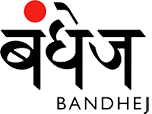
HANDCRAFTED, Sustainable Fashion
Currency

ROGAN PAINTING
Rogan work is a unique technique of painting on cloth. The patterns resembled the embroideries worn by the local communities living in Banni and Pachcham regions of Kutch. Khatri Abdul Gaffur Daud and his extended family are the only artisans who continue practising this traditional craft in Nirona, Kutch. Till recently, a few Khatri families living at Chobari also practised this craft.
In conversation with Gaffurbhai he recalled how several generations of his forefathers had practised the craft of rogan painting. His great grandfather, a Muslim Khatri, Harunbhai, came from Sindh. Gaffurbhai believes that the art of rogan painting on cloth goes back centuries and probably came from Persia, as ‘rogan’ is a Persian word. His son Daudbhai's and his son Sahil have learnt the craft and thankfully will continue the tradition.

In the past the rogan artisans painted on cloth to create ghaghras, odhanas, house decorations such as torans and chaklas as well as large canopies and decorations for the animals for the local communities living in Pachcham and Banni (Kutch). These pieces looked that like embroidered pieces but were an alternative to the time consuming, intricate embroideries.
For the sticky substance used for the painting, castor oil is boiled for around 12 hours over two days, till it becomes a thick gum-like paste. Natural pigments are mixed with the paste. This coloured paste which is not soluble, is kept in water to preventing it from drying. A six-inch metal stylus with a pointed tip is used for painting. Using the palm as a palette, the rogan paste is mixed briskly to a pliable consistency, with the stylus. The stylus is then rolled in the paste to draw it out like a thread, which is used to create a pattern on the cloth.
To create a rogan printed piece, the master artisan first does the a freehand outline on the fabric using the steel stylus, not allowing the stylus to touch the cloth. It is painted with a thick sliver of colour. The painting continues for an hour and before the colour dries the plain cloth is folded over the painted area and pressed to create a mirror impression, transferring the pattern to the plain cloth. After the basic line drawing is done, other members of the family fill in the colours.

Lastly, a dot pattern is painted around the line drawing to give it the effect of a running stitch pattern. Dry mica powder is sprinkled on the wet painted areas to add some glitter. The painted surface has an embossed appearance. The fabrics painted with rogan are colour fast and can be washed. Gaffurbhai claimed that the fabric may tear with use, but the painted pattern will not fade.
Unfortunately, none of the traditional communities can afford to use these fabrics any more. Rogan is now practised only as an art form. The artisans today create small wall hangings as souvenirs to be sold to the tourists who visit Nirona. The family gives a demonstration and shows the process of creating the rogan painting on cloth before displaying the articles for sale. This encourages the tourists to buy a piece.










